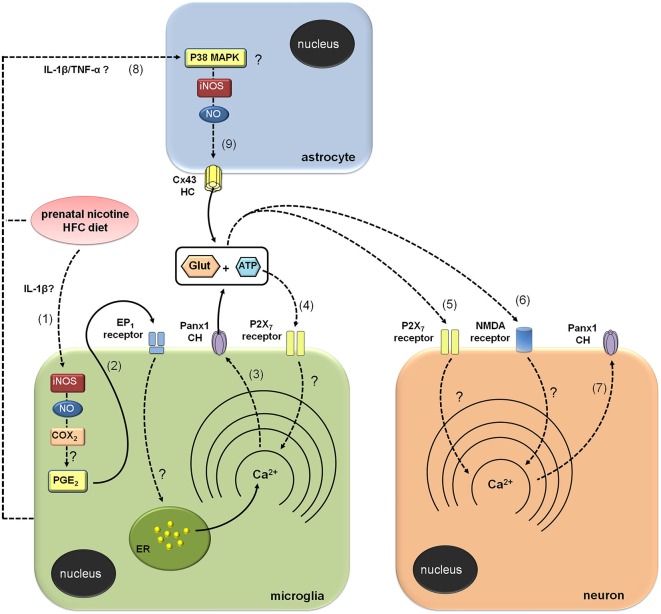Figure 7.
Modulation of brain cell hemichannels by prenatal nicotine and postnatal high-fat/cholesterol diet. Prenatal nicotine and postnatal high-fat/cholesterol diet increase serum levels of IL-1β, leading to iNOS/COX2 activation in microglia (1) and likely in astrocytes and neurons (not depicted). Possibly, PGE2 released from microglia binds its EP1 metabotropic receptors and produces the release of Ca2+ from intracellular stores (2). The increases in [Ca2+]i is a known condition that evokes opening of Panx1 channels (Panx1 CHs), allowing the release of glutamate and ATP through them (3). ATP released via Panx1 CHs activates P2X7 receptors (4), triggering a self-perpetuating mechanism, in which high levels of [Ca2+]i could reactivate Panx1 CHs in microglia. In addition, paracrine release of glutamate and ATP from microglia could act on neighboring or distant neurons, resulting in the activation of P2X7 (5) and NMDA (6) receptors, respectively. The latter enhances the activity of neuronal Panx1 CHs (7), allowing more release of ATP/glutamate and altering physiological functions of neurons (not depicted). Prenatal nicotine and postnatal high-fat/cholesterol diet could increase the release of glutamate and ATP from astrocytes via opening of Cx43 hemichannels (Cx43 HCs; 9). It is possible that microglia through the release of pro-inflammatory molecules (e.g., IL-1β and TNF-α) could contribute to the opening of astroglial Cx43 HCs via the activation of a p38MAPK/iNOS-dependent pathway.

